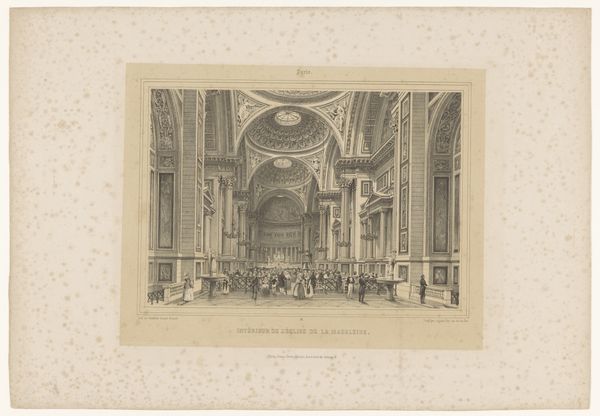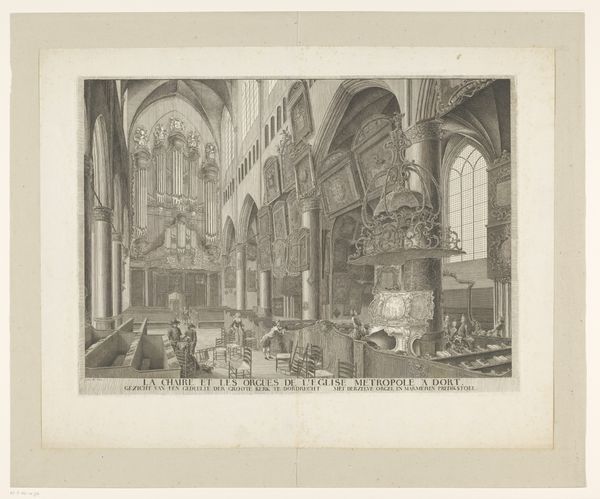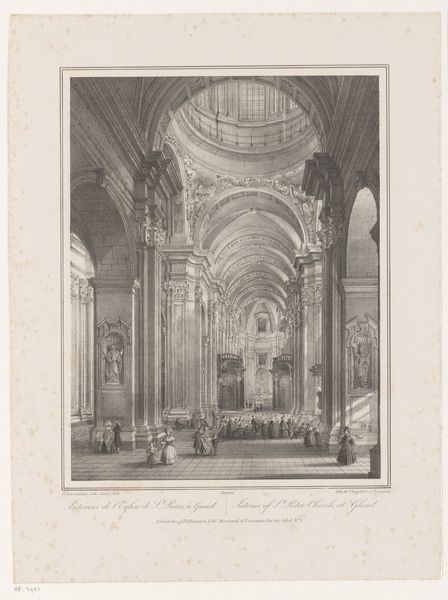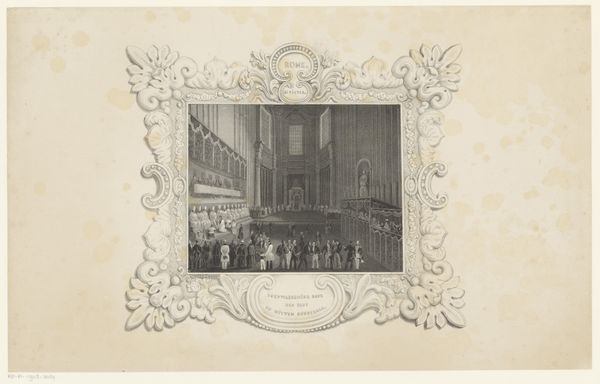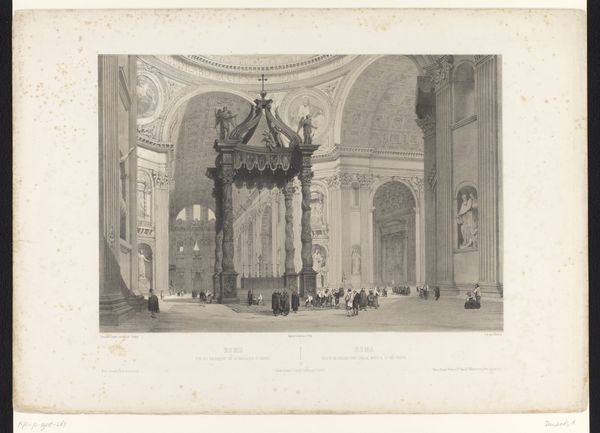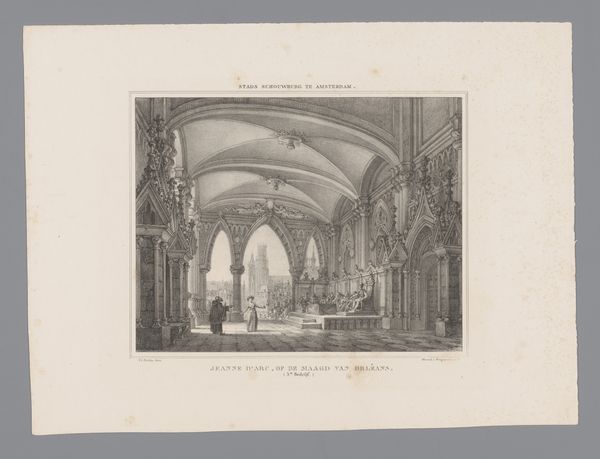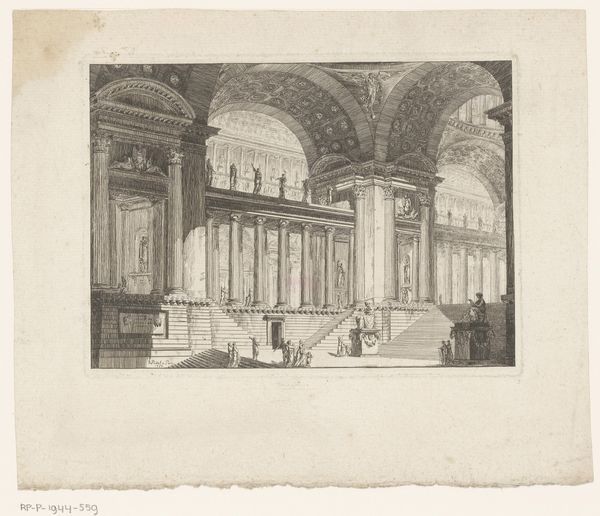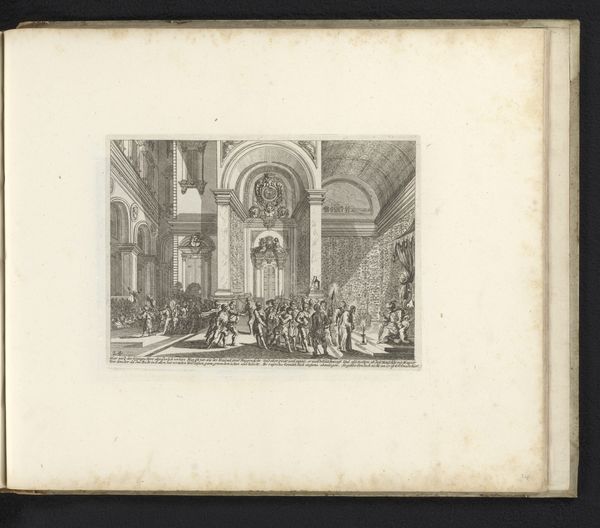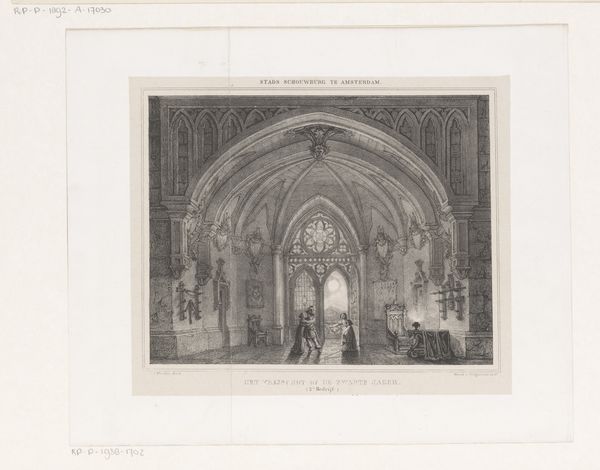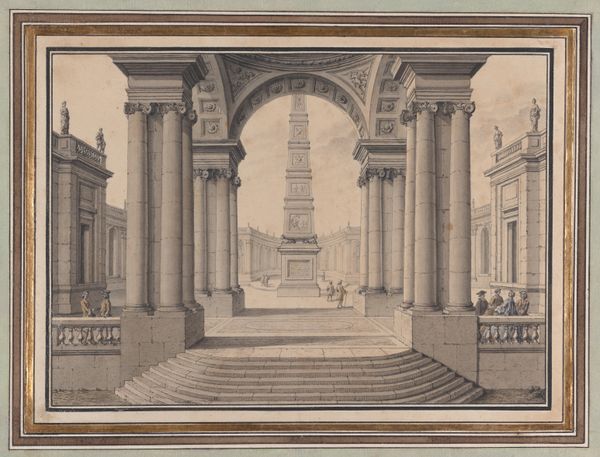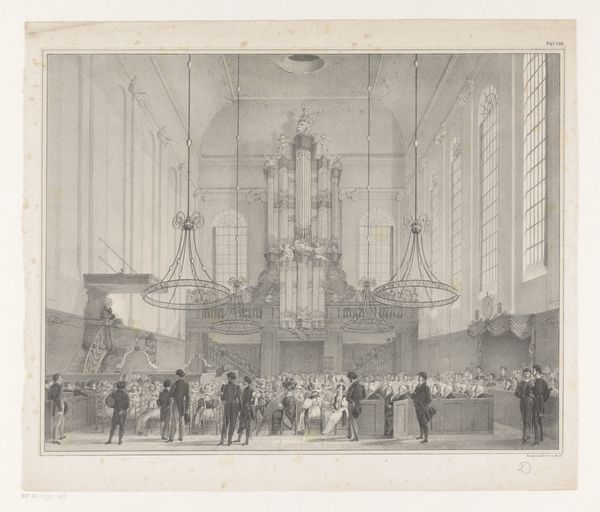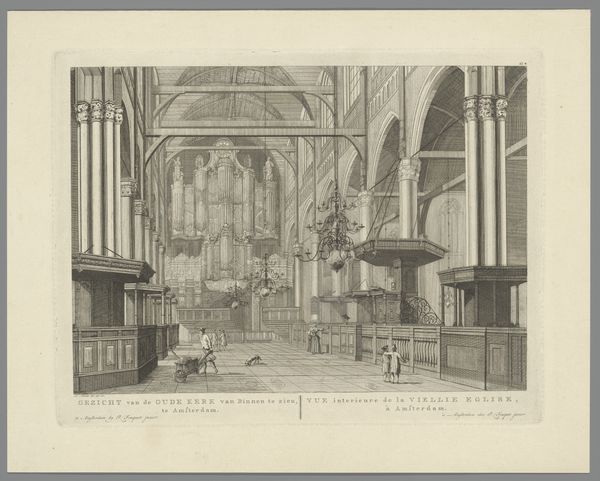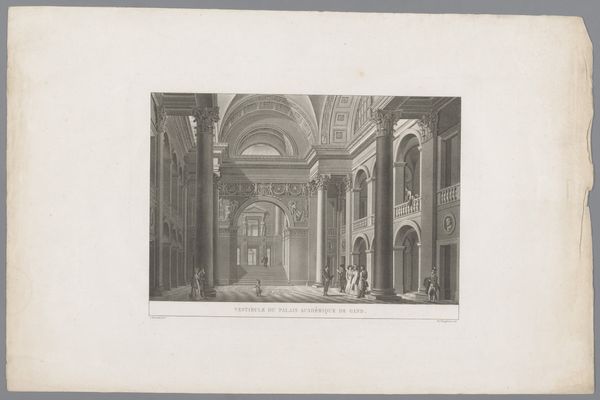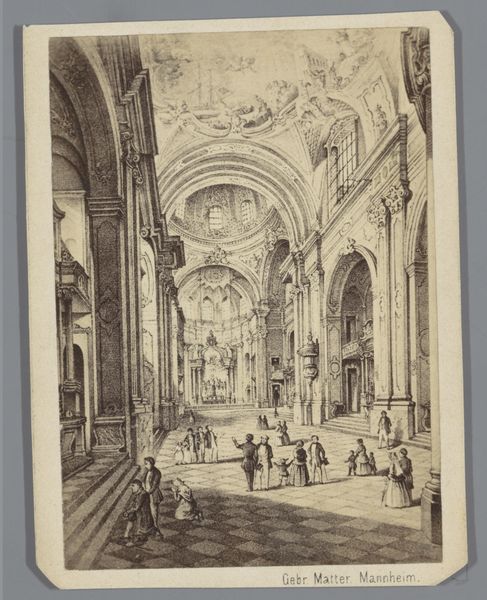
The Anointing of Louis XVI at His Coronation in Reims Cathedral, June 11, 1775 1814
0:00
0:00
drawing, print
#
drawing
#
neoclacissism
#
narrative-art
# print
#
form
#
line
#
cityscape
#
history-painting
#
academic-art
Dimensions: 8 3/8 x 11 15/16 in. (21.3 x 30.3 cm)
Copyright: Public Domain
Curator: This intricate drawing captures a pivotal moment in French history. Here we see François Joseph Bélanger's "The Anointing of Louis XVI at His Coronation in Reims Cathedral, June 11, 1775," created in 1814. It's currently held at the Metropolitan Museum of Art. Editor: My first impression is one of immense scale and meticulous detail. The soaring gothic architecture is rendered with incredible precision, but there's a definite feeling of coldness to the scene. Curator: It’s a calculated chill, reflective of Neoclassical ideals, right? The style really gained popularity during that era. The intention here would have been to visually reinforce Louis's legitimacy by emphasizing tradition and ceremony. The whole space acts as a backdrop of established authority. Editor: Absolutely, I notice the clever use of architectural details, especially the columns. In iconography, columns traditionally symbolize strength, support, and even divine presence. Here, they seem almost overwhelming, emphasizing the king's reliance on these established structures. Curator: Right, and notice how the figures are rendered relatively small compared to the cathedral's immensity. It emphasizes the grandeur of the institution over the individual ruler, underscoring the weight of the crown and perhaps foreshadowing his troubles in retaining it. Editor: The repetition of figures, almost like architectural motifs themselves, amplifies that sense of a preordained social structure. The ritual is clearly intended to invoke a sense of unchanging, divinely sanctioned order, something Louis was struggling to maintain. The visual symbolism of continuity is strong. Curator: Which is fascinating considering that the image itself was created nearly two decades *after* the French Revolution, during a period of restored monarchy. It’s as though Bélanger were actively constructing a nostalgic ideal of absolute rule and of divine right. Editor: Exactly! There is a sort of reaching back, as if attempting to reclaim that idealized past through a visual articulation of symbolism. A yearning to reconstruct lost power and glory is written into the visual details of every element, like some grand stage setting that may never return. Curator: Considering how the French Revolution questioned every premise of royal power and divine authority, Belanger’s visualization becomes a loaded and very strategic depiction. Editor: The weight of that moment—or rather, the weight Bélanger wants us to *feel* from that moment—is captured in these deliberate choices of symbolism and staging. History painted not just as fact, but as powerful iconography.
Comments
No comments
Be the first to comment and join the conversation on the ultimate creative platform.
